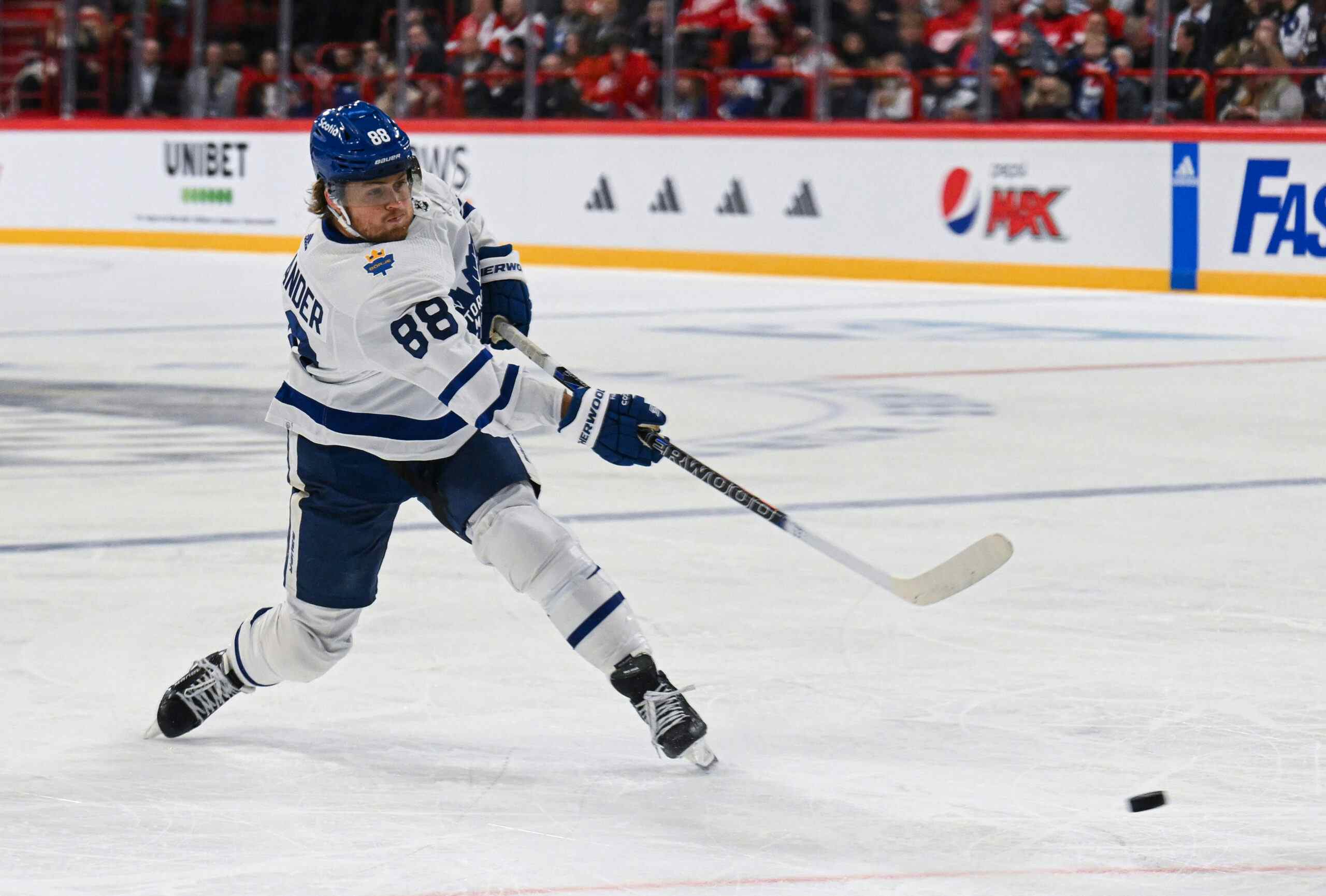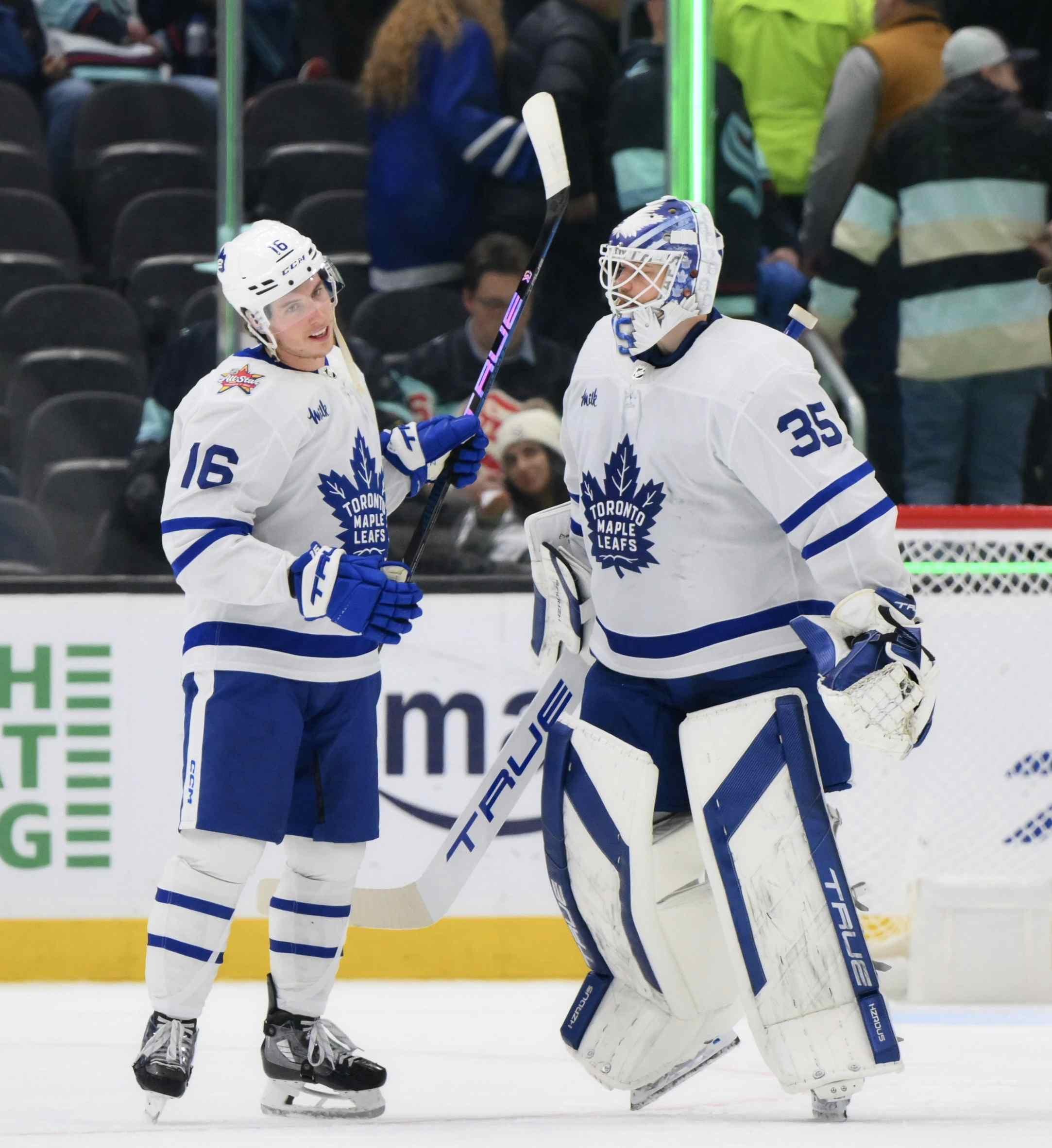Why Rick Nash could be a deadline fit for the Maple Leafs

Photo Credit: John E. Sokolowski/USA TODAY SPORTS
Last night, Chris Johnston of Sportsnet made reference to a certain angle that the Toronto Maple Leafs might take at this year’s trade deadline; specifically, the idea that they take on some short-term salary from a more competitive team in an attempt to get some asset windfall out of the transaction. The Leafs, of course, aren’t far off from the cap ceiling themselves, but if they’re not too worried about seeing a little bit of overage from rookie bonuses spill into next year’s totals, they could activate up to $13.5 million in Long-Term Injured Reserve buffer via Nathan Horton, Joffrey Lupul, and Stephane Robidas. Here’s how Johnston put it in a follow-up piece this afternoon:
Here’s the real kicker: Given their current situation, the Leafs are arguably incentivized to convert that LTIR room into something tangible. They’re facing a significant 2017–18 overage either way and the $750,000 extra hit they’d take for going above the cap now could theoretically be offset by what they get in exchange for doing it.At this stage, adding an $800,000 depth player in a deadline trade would have the same long-term impact on Toronto’s cap picture as acquiring someone who makes $4.25 million or even $7 million. They could even fit in all three of those hypothetical players, assuming each is on an expiring deal.That puts the Leafs in position to take a problem contract off another team’s books – for a handling fee, of course. It’s a similar strategy to the one they employed last season when they added picks and prospects while assuming the unwanted contracts of Brooks Laich, Milan Michalek, Colin Greening and Raffi Torres. It makes them both buyer and seller — a luxury they won’t enjoy for much longer.
Johnston lists six players the Leafs could go after, three they could move, and places himself firmly on team “Don’t trade William Nylander”. He seems to believe the Kevin Shattenkirk gossip has some legs. I really do suggest reading his article to get a good idea of where the Leafs stand heading towards the deadline; there’s a lot of good stuff in there.
But there is one player that I think could get a bit more discussion than given credit for in this piece.
Rick Nash is a name that would’ve turned a lot of heads a few years ago. In fact, many considered him to be a sure thing to come here years ago, to turn around his local franchise. Of course, only a handful of those gossips are ever even serious enough to get to the “he’ll have the talk” stage, let alone pen to paper, and Nash wasn’t one of those; he was signed to an eight-year, $62.4 million contract by Columbus just two days after he was able to negotiate an extension, and traded following the second year of the deal to the New York Rangers in a blockbuster.
Given Columbus’ frequent basement status at the time, many expected Nash to blossom into one of the league’s premier players. He’s had a couple of great seasons there, but that’s never quite materialized, which leads us to the present day.
This year, Nash sits in year seven of that contract, still making his $7.8 million per year. He’s currently sitting eighth among Rangers forwards in scoring, though missing eleven games hasn’t helped him much. What’s interesting is his relative lack of ice time; this year, he’s averaging just 16:25 a game, on what appears to be a year-by-year trend for him on Broadway, and the lowest share of time he’s received since his rookie season in 2002/03 (13:57).

That’s not to say that he isn’t still a good player. He produces like a first liner, he drives offence like a first liner, and plays more of a back-and-forth game than his peers on the team. He’s not going to make the into a structured and responsible unit, but he’s very good at playing “Leafs Hockey”
That also aligns with the eye test. We know that Nash is big, has soft hands, and has a nose for picking up the puck. Zach Hyman and Connor Brown have been great linemates for Auston Matthews, but how much more of a fit would a Nash type player be? Even if you were to keep him away from that line, it could also give the Leafs a bit more room to instigate a James van Riemsdyk deal with another team. Or maybe even to this team; the slight upgrade from Nash to Van Riemsdyk while shedding $3.5 million would probably lead to some significant supplementary assets being thrown in.
The question, of course, is whether the Rangers are willing to move Nash, and what he would cost. The fact that the Leafs have an ability to use their cap windfall certainly helps them; even pro-rating for the deadline and including LTIR gives just 13 teams in the league that could afford to bring on Nash with nothing going back for just this year, let alone next; and with a flat cap, even more of them won’t be able to commit to them next year, which dramatically changes the bidding war when gunning after a 45 point forward with one of the league’s highest cap hits.
This includes the Rangers. As it stands, they’re projected to have $9.85 million in cap space going into the summer, though that can fall to $7 million with the right performance bonuses being hit. With that money, they’ll have to find extend restricted free agents Mika Zibanejad, Brandon Pirri, and Jesper Fast, among others. Nash and Kevin Klein are their only players making more than even $2.5 million (Klein is at $2.9) that are free agents. If Nash isn’t a focal point of the team’s core moving forward, getting out now to better adjust the cap landscape for later could work to their benefit; especially if New York wants to make a different type of splash in the next few weeks to give themselves a shot at winning some playoff rounds.
Another benefit to acquiring Nash could come in June; if he doesn’t work out in the spring and he were to keep his No-Movement Clause waived, Toronto could expose him to Las Vegas in hopes of shedding that least year of his salary.
Would I say that this is a slam dunk, sure thing, going to happen move? Probably not. The type of players that fit Johnston’s description are probably hiding on teams closer to “in the mix” than all out “going for it”; the Mark Fayne’s, Valtteri Filppula’s, David Desharnais’, and Kevin Bieksa’s of the world will be the ones teams will try to shed.
But I wouldn’t rule this one out. The Leafs have a lot of money this year and next year, Nash is a player who would fit their style well, and the Rangers are about as close to broke as the rest of the league is right now. If they present the right pitch at the right time, this could be a good opportunity for Toronto to strike on.
Recent articles from Jeff Veillette





